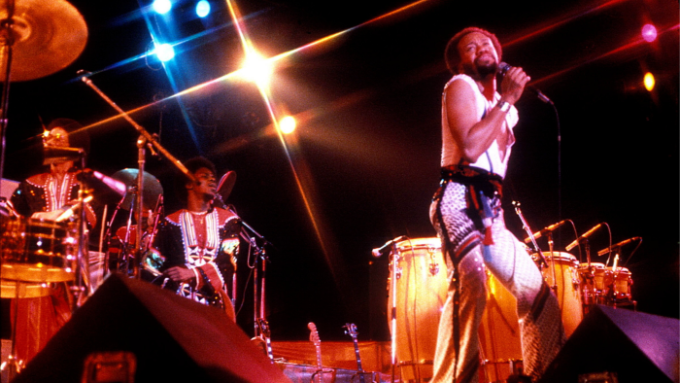Night on Disco Mountain — when Mussorgsky met the dancefloor

Simply sign up to the Life & Arts myFT Digest -- delivered directly to your inbox.
This week’s song takes us on a journey from 19th-century Russia to the dance floors of 1970s New York, via Walt Disney (with detours to Richard Strauss and Malcolm Arnold), and asks: can popular and classical music be successfully amalgamated?
To begin at the beginning: in 1867 Russian composer Modest Mussorgsky completed Night on Bald Mountain, a turbulent tone poem that depicted a witches’ sabbath. The work was never performed in his lifetime but after his death Nikolai Rimsky-Korsakov came up with his own arrangement, and it is this version classical audiences have come to know.
The work’s swirling strings and ominous horns vividly conjure up a dark and blasted scene, so it was no surprise that in the late 1930s, when Walt Disney was making the animated compendium Fantasia, Night on Bald Mountain found its way into the film in a truly scary sequence featuring a vast bat-demon, flying skeletons and all manner of sabbathy strangeness. (Conductor Leopold Stokowski came up with his own arrangement for the film.) Disney’s ambition with Fantasia was to find a meeting-point between “high” culture and popular entertainment. The results were at times schmaltzy but at others impressive.
Thirty-odd years later, in a similar attempt to forge links between “high” and “popular” culture, a new musical genre was emerging from the bedrooms and music rooms of Britain: progressive rock. Complex time signatures, changes of tempo, sophisticated lyrics: this was music that took itself very seriously, as bands such as Genesis, Emerson Lake & Palmer and Yes strove to push the boundaries of rock music.

There was a concomitant ambition to show that rock could be just as “valid” as classical music. Thus, Deep Purple’s Concerto for Group and Orchestra was performed at the Royal Albert Hall in 1969, conducted by Malcolm Arnold (“What’s it like to be with us ‘squares’?” Arnold asks Purple’s keyboardist Jon Lord during rehearsals in the BBC’s concert film); and thus ELP incorporated classical works such as Pictures at an Exhibition, another Mussorgsky suite, into their music.
The problem with much of this rock-classical stuff was that it simply wasn’t very good: at the time the Deep Purple concerto seemed like the harbinger of an exciting new world, but today it just sounds crude and plodding, while ELP’s classical adventures seem to be little more than launch pads for keyboardist Keith Emerson’s noodling. Prog rock as a genre still has a substantial following but, essentially, the rock-classical project withered on the vine in the 1970s.

The jazz world made somewhat more successful forays into this territory, most famously with French pianist Jacques Loussier’s Plays Bach series. Also, in 1973, Brazilian keyboardist Eumir Deodato released a stunning, funk-driven version of Richard Strauss’s Also Sprach Zarathustra. Then along came disco, the apparent antithesis of classical music with its elemental rhythms and repetitive nature. And yet it was disco that finally achieved a synthesis of the popular and the classical in two recordings that made it on to the soundtrack of the 1977 film Saturday Night Fever.
First, musician and composer Walter Murphy disco-fied Beethoven’s Fifth Symphony with “A Fifth of Beethoven”. Meanwhile David Shire was composing original music for the film and came up with a disco version of Mussorgsky’s piece, renamed “Night on Disco Mountain”. It was a triumph, the urgent downbeats of Mussorgsky’s music chiming with the disco groove; this was a musical drama you could dance to. Given that his original piece featured a great deal of witchy dancing, Mussorgsky, surely, would have approved.
For more in the series and podcasts with clips, visit ft.com/life-of-a-song
Main photograph: Photoshot/Collection Christophel

Comments